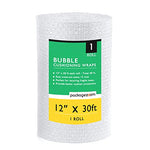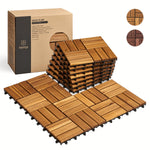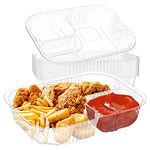You have no items in your shopping cart.
Installing a garbage disposal is a practical and environmentally friendly solution to manage kitchen waste effectively. Whether you're a seasoned DIY enthusiast or a novice looking to tackle a new project, our step-by-step guide will equip you with the knowledge and confidence to install a garbage disposal system with ease. We will delve into the nitty-gritty of the installation process, explore the essential tools and materials required, address frequently asked questions, and provide expert tips for optimal performance.
Garbage Disposal Installation
The garbage disposal installation process involves several stages, each critical to ensure the system's proper functioning. Let's walk through each step in detail:
1. Safety First: Precautions and Preparations
Before starting the installation, prioritize safety. Shut off power to the area to avoid accidents and ensure you have the necessary tools and materials, including a garbage disposal unit, mounting assembly, drain connection, plumber's putty, electrical connectors, and more.
2. Assessing Plumbing and Electrical Compatibility
Ensure that your kitchen's plumbing and electrical systems are compatible with a garbage disposal unit. Verify if you have a standard sink with a single-drain configuration, as this is ideal for a straightforward installation.
3. Choosing the Right Garbage Disposal Unit
Selecting the appropriate garbage disposal unit based on your household's needs and kitchen habits is crucial. Consider factors such as horsepower, noise levels, grinding capabilities, and warranty to make an informed decision.
4. Removing Old Disposal (if applicable)
If you're replacing an existing garbage disposal, follow the necessary steps to remove the old unit safely. Properly disconnect all plumbing and electrical connections before proceeding.
5. Mounting the New Garbage Disposal
Proper mounting of the new disposal unit is essential for its stability and smooth operation. Follow the manufacturer's instructions to securely mount the unit under your sink.
6. Connecting the Drain and Dishwasher
Ensure a leak-proof connection between the disposal's drain and the sink's drainpipe. Additionally, if your dishwasher connects to the disposal unit, establish a secure connection for proper drainage.
7. Wiring and Electrical Connections
Carefully wire the garbage disposal to the electrical circuit. It's crucial to follow electrical codes and safety guidelines during this step.
8. Testing and Troubleshooting
Once the installation is complete, conduct a thorough test to ensure everything functions correctly. Address any potential issues and perform troubleshooting as necessary.
9. Maintenance and Care Tips
Maintaining your garbage disposal properly is essential to extend its lifespan and prevent costly repairs. We'll share valuable maintenance tips to keep your unit running smoothly.
10. Dos and Don'ts of Garbage Disposal Use
To maximize your garbage disposal's efficiency and avoid potential clogs, we'll outline what you should and shouldn't put down the disposal.
11. Common Garbage Disposal Installation Mistakes to Avoid
Learn from others' mistakes and prevent common errors that can lead to installation complications and malfunctioning units.
12. Enhancing Garbage Disposal Performance with Cleaning Techniques
Discover effective cleaning techniques to eliminate odors and maintain optimal performance in your garbage disposal.
13. Noise Reduction Techniques for Quieter Operation
If noise is a concern, we've got you covered with practical tips to reduce the noise levels of your garbage disposal.
14. Upgrading to a Batch Feed Garbage Disposal
Explore the benefits of upgrading to a batch feed garbage disposal system and the installation process involved.
15. Addressing Leaks and Blockages
Learn how to identify and address common issues like leaks and blockages that may arise during the lifespan of your garbage disposal.
16. Extending Garbage Disposal Lifespan: Dos and Don'ts
Maximize the longevity of your garbage disposal unit with proper care and adherence to best practices.
17. Garbage Disposal Installation for Commercial Kitchens
For commercial kitchen owners, we'll provide insights into installing heavy-duty garbage disposal systems suitable for high-volume operations.
18. Eco-Friendly Garbage Disposal Options
Explore environmentally friendly garbage disposal units and how they contribute to sustainability efforts.
19. Frequently Asked Questions (FAQs)
How long does it take to install a garbage disposal?
The time required for installation depends on your level of experience and the complexity of the unit. On average, it can take between 1 to 3 hours.
Can I install a garbage disposal myself, or should I hire a professional?
While DIY installation is possible for individuals with basic plumbing and electrical knowledge, hiring a professional plumber ensures a seamless installation and minimizes potential risks.
Is a permit necessary for installing a garbage disposal?
Most residential installations do not require permits, but it's essential to check local regulations to ensure compliance.
Can I install a garbage disposal on my own if I have no prior plumbing experience?
With careful research, preparation, and following instructions diligently, even those with no prior plumbing experience can successfully install a garbage disposal.
Are all garbage disposal units the same size?
No, garbage disposal units come in various sizes and configurations to accommodate different kitchen setups and needs.
Can I use my garbage disposal to grind all types of food waste?
While garbage disposals can handle a wide range of food waste, some items like bones, grease, and fibrous materials should be avoided to prevent damage.
With this comprehensive guide, you now have the expertise to install a garbage disposal system confidently. Remember to prioritize safety, follow manufacturer instructions, and practice proper maintenance for optimal performance and longevity. Installing a garbage disposal not only adds convenience to your kitchen routine but also contributes to a more sustainable environment by reducing landfill waste.








